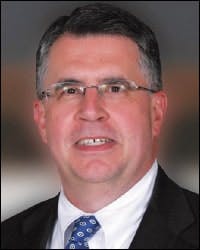The Automotive Service Association (ASA) has made a recent push to lobby more frequently on Capitol Hill and advocate for issues in the industry. Bob Redding is the association’s Washington, D.C., representative. He recently discussed what the ASA has done so far, what they plan to do, the biggest issues the industry is facing and how the organization plans to better support the mechanical industry.
WHAT ARE ASA’S LOBBYING EFFORTS?
We have an office on Capitol Hill and have had one for many years. We do smaller fly-ins regularly. That’s where we will bring in teams of leaders from the mechanical and collision side. We’ve brought them in together and separately. This year, we are doing some smaller fly-ins, one for mechanical and one for collision. Those target specific issues that we have in play at that time.
We also had our annual meeting here this year so we had a bigger fly-in. Everyone participates in it, even some of our associate members, corporations or another non-profit. Everyone attends and goes to Capitol Hill.
WHAT ARE THE BIG ISSUES ON THE MECHANICAL SIDE?
Our top priority is protecting the periodic state vehicle inspection programs. We are encouraging those programs to be stronger. We had as many as 33 of those programs at one time when it was mandatory. The programs started clicking upwards, as far as numbers of states that had them, but Congress reversed itself and said, “You don’t have to do that.” After that, the numbers started dropping. We now have 16 states that have programs. We lost Mississippi this year. It was not one of the stronger programs, but we don’t want to lose any more. Some of the numbers you see on that issue, you might see more than 16 states, but we’re not counting states that have some nuance where it’s only commercial vehicles.
WHAT ARE THE CONVERSATIONS YOU’RE HAVING ABOUT THOSE INSPECTION PROGRAMS?
We look for legislative vehicles where we can help shore up those programs. We would like to see a NHTSA study correlating states that have programs and states that don’t have programs, and comparing the number of accidents, injuries and fatalities. That’s been done in Missouri and Pennsylvania. The Pennsylvania study was by the Department of Transportation and was one of the best I’ve seen and the most recent. The results of that research clearly demonstrated that the Pennsylvania program is effective and saves lives. The results showed that Pennsylvania can be expected to have between 115 and 169 fewer fatal crashes each year, corresponding to between 127 and 187 fewer fatalities each year, than it would if it did not have a vehicle safety inspection program. In addition, the largest difference in reported vehicle failures at the scene of fatal crashes between states with programs and states without programs is for vehicles of three years of age or more.
ARE THERE ANY OTHER ISSUES THE ASA IS PURSUING?
Another priority for the ASA board is telematics. That’s a big deal for us. We hosted the Technology and Telematics Forum at the NACE/CARS Expo & Conference last year. We wanted a high-powered panel with representatives from NHTSA, telecoms, OEMs, privacy think tanks, lawyers who specialize in the telematics area. We wanted everyone to be in a panel format and allow our members to dialogue.
We followed that with a meeting in Dallas. We had close to 70 or so groups represented. That was associations and companies, aftermarket and OEM. Our current ASA chairman, Donny Seyfer (co-owner of Seyfer Automotive in Wheatridge, Colo.), was the moderator. We kicked it off with some presentations on what people thought were the issues, new technologies and we dialogue with issues of concern. We are going to continue those meetings.
In addition, we hosted the second Telematics and Technology Forum at NACE/CARS in Detroit this summer. That program was a little more intense and had a very targeted presentation. Telematics is a big deal to us. As cars have continued to evolve and telematics continue to become a big part of that, we want to stay at the cutting edge and the forefront.
WHAT ARE SOME OF THE AREAS OF CONCERN THAT WERE DISCUSSED?
The kinds of issues have to do with items of the future, like what mechanisms will be available with these new technologies for independents to obtain information? This part is important because this is an evolving area for all segments of this industry, whether it’s OEMs or the aftermarket. There’s a group of third-party people that are developing these technologies, pitching them to the OEs and the aftermarket.
I want to stress something here: We saw what happened with Right to Repair and service information. What the ASA is most interested in is an industry dialogue with all parties—the aftermarket, third parties and OEs—and working together. We’ve already had telematics legislation in California and Rhode Island. This model has been successful on service information, training and tools. We want to see that in telematics. ASA’s interest is in exhausting this process, making sure that parties are meeting and dialoguing and the correct information, as far as issues, is on the table. If you have parties in the same room, we think that’s a very healthy part of the dialogue.



